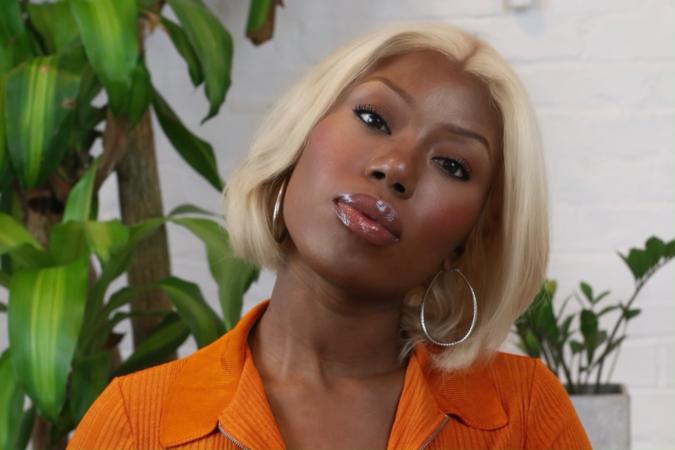The digital age of journalism has birthed a new generation of writers who have a contemporary medium for storytelling and news reporting. Digital journalism not only changed the way we consume news but also changed the way journalists distribute their editorial work.
Today journalists face the task of navigating social platforms to amplify their work. As social media plays a huge role in news reporting now, it also muddies the space for journalism to have a place to thrive on platforms like Facebook, Twitter, Instagram, and others.
Journalist, writer, editor, and on-air commentator, Ivie Ani is a well-respected figure in journalism who uses her various platforms to speak on media, journalism, identity, pop culture, hip hop, the diaspora, music, and history.
As a role model for passionate journalists, she’s been able to create purpose behind her work to have a lasting impact on the culture. With a formal background in print journalism from New York University, Ani has a unique view on both sides of journalism and its changing landscape.
“Journalism is about finding and telling the truth,” she said. “Now, with social media and digital spaces, we’re seeing more than one way to find and tell the truth.”
In an article published by The New Yorker, they reported that the “current system for delivering news online is broken.” They went on to say, “a central purpose of journalism is the creation of an informed citizenry. And yet—especially in an environment of free-floating, ambient news—it’s not entirely clear what it means to be informed.”
According to Ani, in cases where individuals are trusted as sources over organizations, it becomes hard for traditional news standards to have a say so in how news is reported on social media.
“There are countless stories being produced daily, that highlight what’s going on online – whether it’s everyday people or public figures. Anyone can be a source, and this shifts who and what institutions people trust.”
With so much happening online, it’s difficult for journalists to break through the noise, but being flexible with how our voices are used on these platforms can benefit audiences in the long run.
“There are other platforms that extend beyond the traditional news outlet, and more people are occupying those spaces looking for news, so you have to go where the audience is,” Ani said.
According to the International Center For Journalists, audience engagement “creates real interactivity between news outlet and news consumer that involves more than a Facebook like. It means providing news that is of tangible value to people’s daily lives.”
People are actively searching for ways to get their news aside from established publications. In Ani’s opinion, especially during this time, “it would behoove journalists to fine-tune what they’re doing to better serve an online audience.”
Many journalists now are making the pivot to content creators to make news more digestible for audiences and to make great strides in the digital space as well.
Ani has shown a great level of mastery in this sense when it comes to breaking down her long-form features and critical essays for her audiences to better understand.
Her article rollouts on Twitter and Instagram are examples of what it means to be a multimedia journalist today and actively engage with an audience.
Back in March, she spoke on an Instagram Live session with creative director Josef Adamu about the importance of presenting your own work on social media as a writer and journalist.
ivie on the importance of a good roll out as a writer/journalist. pic.twitter.com/42zo2Vg3Cz
— Josef Adamu (@josefadamu) March 21, 2020
“It doesn’t matter how much you post something, it’s about what you post and how you post it,” Ani shared.
What’s proved successful for her is combining a visual element within her posts to catch the average person’s attention.
The graphics I make and the specific excerpts I pull from a piece. The timing between posts. The commentary I make and the questions I pose online can be a part of a rollout https://t.co/0QPNs1QmYp
— Ivie Ani (@ivieani) March 22, 2020
“Sometimes you have to be the one to extract the most important information because the general public is likely not to do that,” Ani said.
Much of Ani’s motivation behind her work is her mission to create a dialogue around the larger themes of her pieces.
“If I can attach my work to a bigger conversation [online], then that’s the key,” Ani said. “I think the focus for social media is how to start a conversation, how to enter a conversation, and how to ask and answer questions within that conversation.”
Ani is able to use social media as a tool to gauge her audience’s interests and see exactly what people are talking about. Her voice is valued in a way that leads to outlets quoting her and even commissioning her to expand on those points.
Ani’s online practices for presenting news are exemplary models of journalism that many should take note of. In today’s world where digital and social media are taking over, journalists must learn to adapt so accurate news reporting remains the leader of the cultural media landscape.
Ani has launched both a monthly newsletter and Instagram Live interview series called “In Full Effect” where she continues her critical conversations and keeps her audience updated on her work.
For more information on Ani’s work, you can follow her on Twitter and Instagram.

